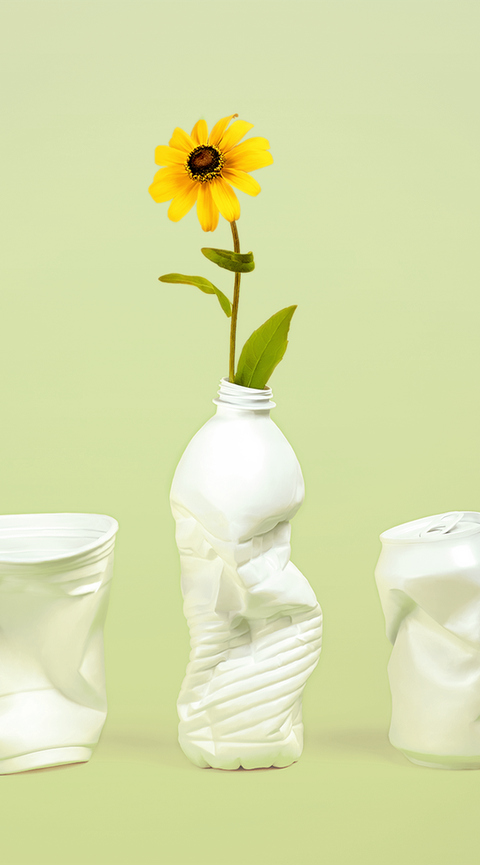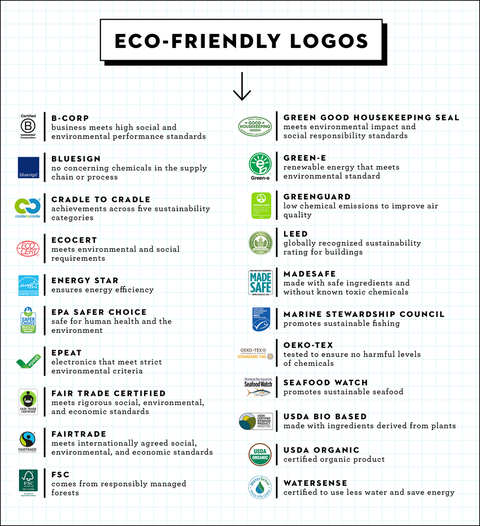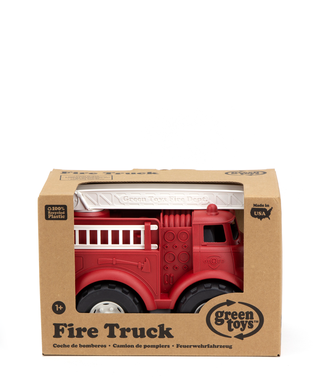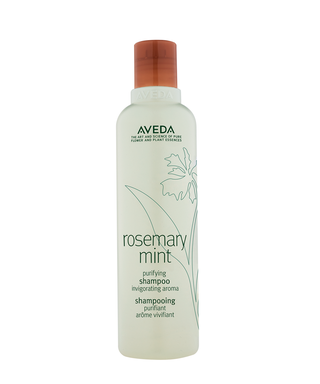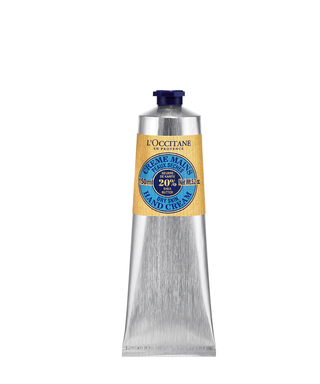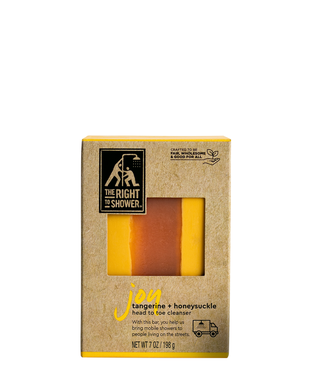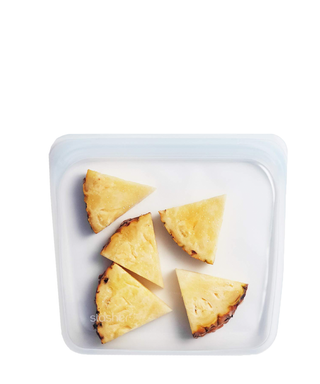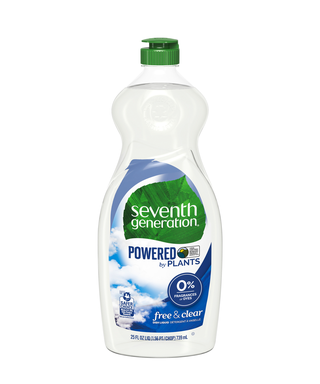
[ad_1]
The term “eco-friendly” gets thrown around a lot — you see it on labels for everything from sandwich bags to sheets. Because it’s used so often, it can be hard to understand the true importance of eco-friendly products. And if you aren’t sure what the word actually means, there’s a greater risk of being misled by companies claiming to be conscious of the environment.
What is the definition of eco-friendly?
According to Merriam-Webster, the official definition of eco-friendly is: “not environmentally harmful.” When it comes to products, that means everything from production to packaging needs to be considered safe for the environment. But the FTC has strict guidelines on eco-friendly claims, and here’s where it gets tricky: The FTC Green Guides say that in order for a product to be properly labeled as “eco-friendly,” the packaging must explain why it is environmentally responsible. Otherwise, based on how consumers actually use the product, it could, in fact, be harmful to the environment.
We’re passionate about all things sustainable at the Good Housekeeping Institute: Our team regularly evaluates products for the Green Good Housekeeping Seal, an emblem earned based on a given product’s environmental impact, and hosts our Raise the Green Bar sustainability summit and Sustainable Innovation Awards annually. In short: We’re here to help you decode eco-friendly claims so you can make smarter decisions for your household and the environment.
Truth be told, our environmental experts prefer to use the term “sustainable” rather than “eco-friendly.” Why? When it comes to product production, everything has some sort of negative impact on the environment (think: water usage, energy and product waste, etc.), and that means there really aren’t any products that fit the dictionary definition of eco-friendly. On the other hand, when we call something sustainable, it means that a single attribute is good for the environment — not necessarily everything about the product. “Eco-friendly” is also considered a greenwashing term, given that it is regularly used in misleading marketing claims (keep reading for more on that topic).
A cheat sheet of “eco-friendly” terms
“Environmentally friendly,” “eco-friendly,” and “earth-friendly” are just different ways of saying “not environmentally harmful.”
“Green” is a “casual term that people use in exchange for any word relating to eco-consciousness,” says Birnur Aral, Ph.D., Executive Director of the GH Institute’s Health, Beauty and Sustainability Lab. “It’s a multi-faceted term, but it generally implies better practices for both the environment and the people involved.” When we surveyed over 5,000 people from our consumer panel, we found that 65% think the word “green” is synonymous with environmentally friendly and eco-conscious practices.
“Sustainable” and “sustainability” can be defined in many ways, but sustainable living generally means “the practice of making sure we don’t deplete our natural resources while maintaining a prospering economy for future generations,” says Aral. “It is thought to have three pillars: people, planet and profit. For a business, this means that ensuring the wealth of employees (and people related to that business) and minimizing or even reversing its environmental impacts should be as important as turning a profit for it to be sustainable in the long run.”
How to spot (and avoid) greenwashing
Greenwashing is a term used for when a company deceptively puts eco-friendly claims (think: “environmentally friendly,” “sustainable” or “green”) on its product packaging. In most cases, they are broad claims without any support to back them up. Here are a few examples of deceptive claims to watch out for, according to our environmental experts:
- A bottle of laundry detergent is labeled “free of phosphates.” Since phosphates were removed from this type of product decades ago, any reputable detergent manufacturer has already phased out the ingredient. This is considered greenwashing because phosphate-free laundry detergents are already the norm.
- A comforter or sheet set is labeled “all natural.” While the product may be made with plant-based materials like bamboo, the raw materials go through a series of manufacturing processes that synthetically alters them. This claim is deceptive because “all-natural” suggests that the bedding came straight from nature. “There actually is no such thing as ‘bamboo’ fiber since it’s really rayon,” says Lexie Sachs, Executive Director of the GH Institute’s Textiles Lab. “Plus, the process involves toxic chemicals that are dangerous to the workers, wildlife and environment where it’s produced.”
- A yoga mat is labeled “biodegradable” or “recyclable.” Because of the conditions at landfills, these materials won’t break down quickly, and you can’t recycle a yoga mat with curbside pickup or even bring them to a U.S. recycling center. These claims are considered greenwashing since they state an environmental benefit, but no meaningful benefit exists.
- A company displays an environmentally-friendly symbol that doesn’t exist. Watch out for fake eco-friendly symbols created by brands. Even if a product has a green logo that says “earth friendly,” it means nothing if the company designed it themselves. You can find more examples of misleading environmental claims in the FTC Green Guides.
How to find products that are truly eco-friendly
When it comes to products, there are ways to “make smart and educated decisions before you purchase something new,” says Sabina Wizemann, Senior Chemist at the GH Institute’s Health, Beauty and Sustainability Lab. That’s where our experts’ rigorous testing comes in — they can help you find the products that actually work and are less harmful to the planet. “An effective product is less likely to be thrown away or replaced,” which cuts down on waste, says Wizemann.
Beyond browsing our product reviews, look for products with established, third-party emblems like EcoCert Cosmos for organic cosmetics or Fair Trade Certified ingredients. Don’t get greenwashed by products with false emblems and bold claims: If it sounds too good to be true, it probably is. Below are the logos you can actually trust. They signify a certain aspect of the product is environmentally friendly:
A guide to shopping smartly and sustainably
🌎 Think circular. A circular economy intends to stop waste from being created in the first place — a complete 180 from our current “take-make-waste” economy, which means we take materials from the Earth, create products from them and eventually trash them. Take a chip bag, for example. It’s designed to be disposable: The packages typically cannot be reused, recycled or composted, so they end up as waste.
That’s where brands with more sustainable product designs are stepping in, like Izzy Beauty with its zero-waste mascara, so you can use, refill and repeat by mailing your empty mascara tubes back to the company in reusable envelopes. We Are Uni’s body care line also follows this closed-loop cycle by using 100% recyclable and reusable aluminum bottles that can be emptied, then shipped back to the brand in their original boxes.
🌎 Be mindful about how much you’re buying. Above all, only buy what you need. A product requires a lot of energy and resources before it even gets into your home. If you buy fewer products, you’ll lessen the impact on the environment via a lower demand for its production process. If you find that you’re stocking up on barely used products, it’s time to reevaluate.
🌎 Buy second-hand textiles. For clothing and bedding products, the best way to live sustainably is by reusing products. “Whether you’re sharing clothes with friends or buying from a site like eBay or ThredUp, giving a garment new life is more eco-friendly than creating something new,” says Sachs. “That’s still true even if an item has recycled or natural fibers, because of the amount of energy and water that’s required in the textile production process.”
🌎 Opt for reusable items. Remember to bring reusable bags for produce and pantry items when you go shopping to cut down on plastic waste. Switching to reusable sandwich bags (our favorites are made by Stasher) and beeswax food wraps will help replace hundreds of single-use plastic baggies that would eventually end up in landfills and oceans. These days, you can even be conscious of your effect on the environment when using single-serve espresso and coffee pods: Nespresso recently took a step in the right direction by making fully recyclable capsules.
🌎 If you must buy new, buy recycled. When shopping, look for sustainable fibers like Tencel and organic cotton. Tencel uses chemicals that are less toxic and less wasteful than those in similar fibers (like rayon), while organic cotton uses less water than conventional growing methods, explains Sachs. And avoid ‘bamboo’ fiber at all costs.
🌎 Use plant-based cleaners. “Look for products that contain safer ingredients, like plant-based cleaners and those with EPA Safer Choice certifications,” says Carolyn Forte, director of the GH Institute’s Home Appliances and Cleaning Products Lab. Even though ingredient transparency isn’t required by law yet, more and more companies (like Seventh Generation) are choosing to list all ingredients in a product. This encourages companies to use more renewable resources that are better for the environment. Plus, people simply like to know what ingredients are in their products and where they come from.
This content is imported from {embed-name}. You may be able to find the same content in another format, or you may be able to find more information, at their web site.
🌎 Opt for concentrated cleaning and health products. The best option for the environment is cleaning concentrates that you can dilute with water in reusable containers, like Brandless Cleaning Concentrates. Forte says this helps eliminate excess packaging and waste.
🌎 Seek minimal packaging. Avoid products with secondary packaging and films. Instead, look for items with minimal packaging made of recycled materials (like cardboard and aluminum instead of plastic). For example, bar soaps are usually a great option because they often have little packaging and can be completely used up. There are even toys (like the Green Toys Fire Truck) that are packaged with sustainable materials.
[ad_2]
Source link

